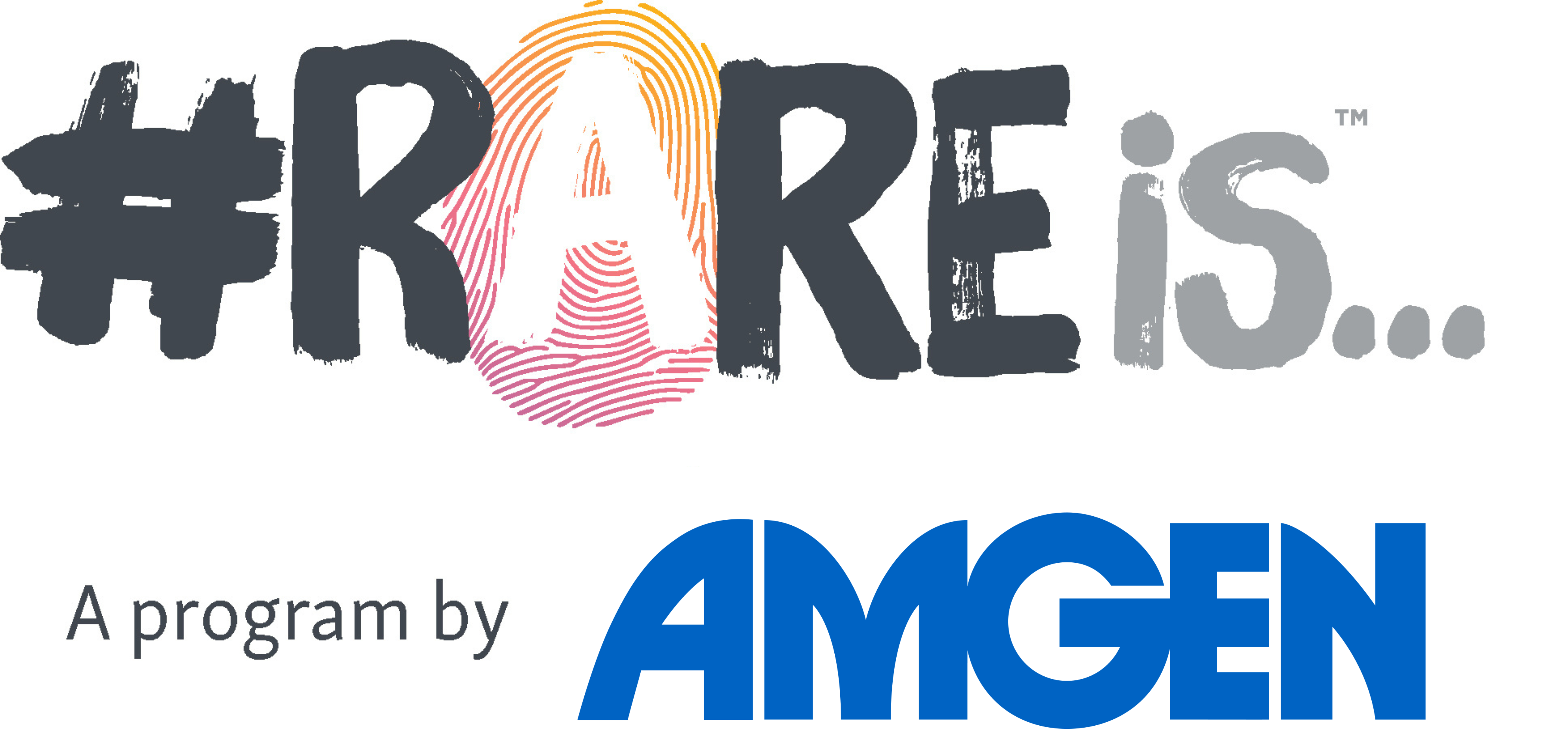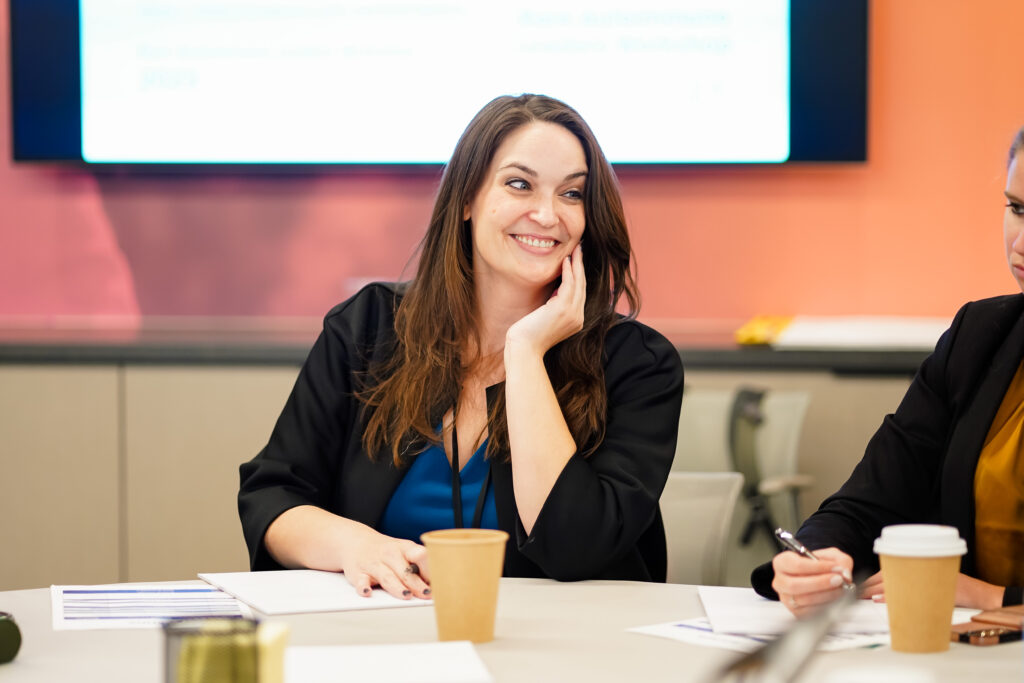Navigating Life
After living with a myasthenia gravis diagnosis for almost six years, my experience with the disease has been characterized by being in “the middle.” I first experienced symptoms of double vision, in which my view of the world was duplicated—sometimes side by side, sometimes stacked, sometimes at an angle. For instance, to pour milk into my cereal bowl without spilling, I realized that I had to estimate the depth and perception somewhere in the center of the two pictures.
As I sought answers to these new symptoms, living in middle-of-nowhere rural Kentucky was an obstacle to accessing a specialist with the knowledge to properly diagnose this rare disease. However, unlike many of my neighbors, I was lucky to have resources and support that enabled me to travel for care and receive a definitive diagnosis in under a year—a luxury of time that many others in the rare disease community do not have. Despite the luck of a shorter diagnostic odyssey and fast access to treatment options, the toll of new symptoms, treatment burden, and surgery recovery during a global pandemic forced me into a mid-career pivot. I had to face my changed abilities and meet myself in the middle of where I thought I would be headed in life and where the disease was taking me.
As I reckoned with a new trajectory, the #RAREis Scholarship enabled and empowered me to return to school to earn a Graduate Certificate in Nonprofit Management, emerging with 12 credit hours toward a master’s degree. Learning about strategic planning, grant writing, and nonprofit management attached valuable credentials to over a decade of volunteer leadership and service to nonprofits. Next, I began pursuing a Graduate Certificate in Population Health, combining credits toward a Master of Public Health and gaining a broader understanding of public health systems and healthcare policy concepts. While I continue carving my path in this program, I have become an employee of the Myasthenia Gravis Foundation of America (MGFA), a patient advocacy organization with a shared vision of A World Without MG. At MGFA, I serve as a conduit of the patient voice in research and advocacy endeavors, working behind the scenes—between patients, researchers, and clinicians—to infuse the patient perspective into all aspects of research and therapeutic development.
Meeting Yourself and Others in the Middle: Advocacy Tips
For those of us living with myasthenia gravis, the messages from our brains can get stuck between sending and arriving at the muscle, leaving our muscles weakened. It can sometimes feel like this same issue exists when attempting to explain our rare disease or our rare needs—our messages—to others. As patients, we must express our disease and our needs in a way that gets the message through to those we share our lives with, our doctors, and even the decision-makers who shape policies that influence us. Here are some things I’ve found helpful in getting my message unstuck:
- Empower Yourself to Know Your Disease
- Living with a rare disease is a monumental life change, and you need to understand what the disease entails. There are over 10,000 known rare diseases, so even the best superhero doctors, nurses, healthcare workers, and EMTs are not going to be experts in every single one. The more you know about myasthenia gravis, the better you’ll be able to manage your own health, monitor your symptoms, and translate your experience to your family, friends, and care providers. I gravitated toward the resources of the MGFA early in my journey, as they offer a vast library of information, patient resource packets, webinars and YouTube videos, community health fairs, and support groups where I could learn about the disease from trusted, unbiased sources.
- MG has fluctuating symptoms. Pay attention to when you feel best and when you feel worse. Track your symptoms and note things that may trigger or exacerbate them, as well as things that help keep them at bay. I use a combination of journal notes and the MyMG mobile app. Tracking helps me notice patterns I might not otherwise recognize. This allows me to better schedule my day around my fluctuating symptoms, avoid triggers, and anticipate my needs as much as possible.
- Embrace and Acknowledge Your Needs
- As patients and family members, we must find ways to make MG make sense to ourselves, our friends, families, coworkers, and doctors. Ensuring that our perspectives are at the forefront of decisions made by healthcare providers, insurers, therapeutic developers, and policymakers—at every step of the way—is vital and urgent!
- Start personally by reflecting on your experience living with myasthenia gravis. Assess it from your lens as a patient, as a member of a family and friend group, and as an employee, student, or community member. Think about what changes could be made in your home, workplace, school, community, or even in laws that would help make life easier.
- Share Your Message and Ask for Help
- Advocacy can start small. It begins with being honest with yourself and others about your experience, needs, and limitations. It means telling your story and connecting it to your needs and the needs of the community. From there, talking with other members of the community and forming relationships with patient groups such as MGFA enables you to start pushing the needle on the issues that frustrate you or create barriers to your healthcare.
The Power of Advocacy: Sharing Your Story and Making an Impact
I encourage every rare disease patient to practice telling their story and being honest about their needs. For advocacy on Capitol Hill during Rare Disease Week, that comes in the form of a 1-2 minute “pitch” or “elevator speech” in which you explain the disease, share your story and how it has affected your life, and make an “ask” or request for what can be done to help in terms of policy.
In everyday life, advocacy can be as simple as explaining MG, telling someone why you use a cane or wear an eyepatch, saying no to taking on a commitment, or requesting information from your doctor about a new treatment. Your “ask” could be for a relative to check out the MGFA website to learn more about your disease or for a boss to help find solutions for mitigating activities that cause you fatigue.
Increasing awareness of MG, telling your story, and articulating your needs is advocacy in a nutshell—and advocacy is the best way to get unstuck from the middle of where we are and where we want to be.

